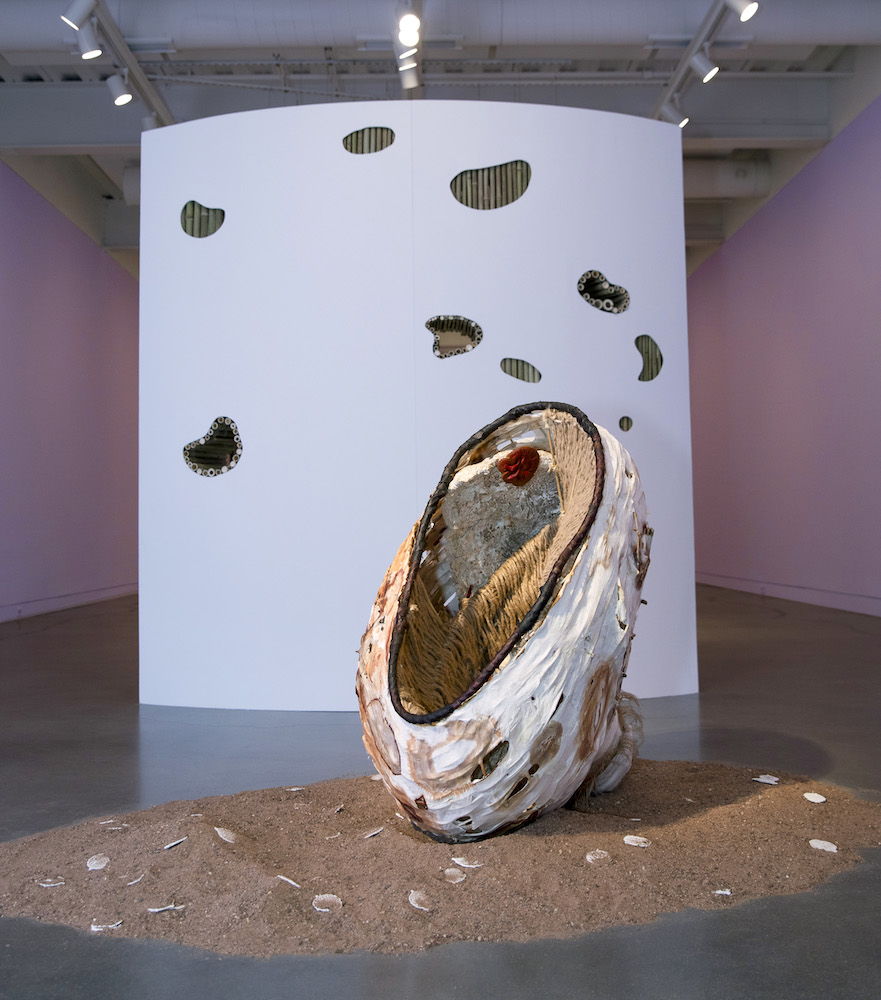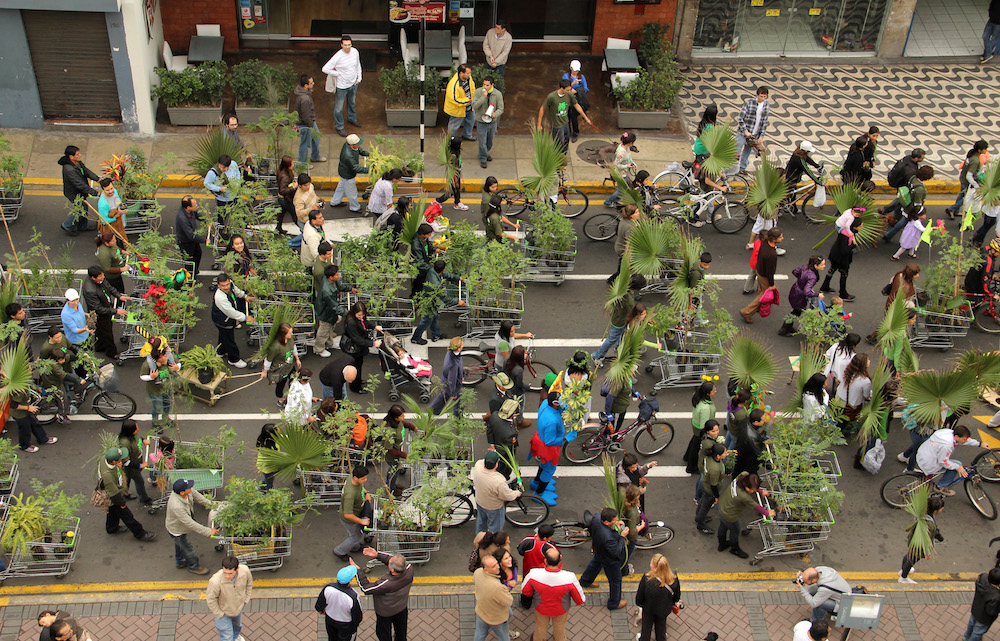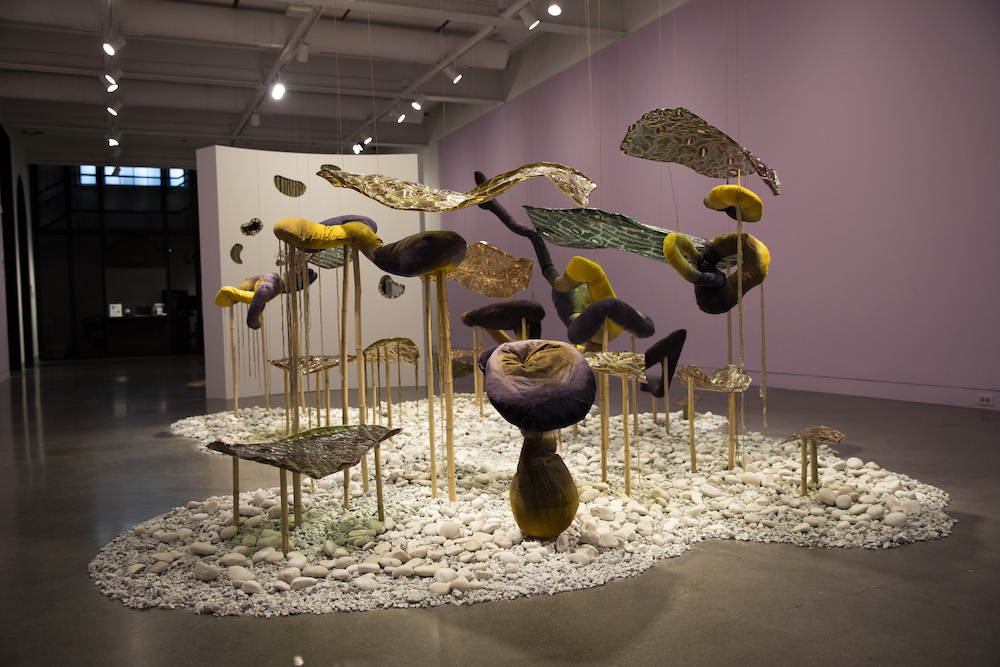As a kid, Lucia Monge often gazed at birds through her grandfather’s binoculars, taking in the wonders of nature at an early age. Sometimes the birds looked so extraordinary and colorful that she pondered: Could they be real? Or were they something from a fairy tale?
Those formative years in Lima, Peru, shaped Monge’s focus as an artist. “A garden is a great privilege,” she said in a recent phone interview, thinking back to those weekends when her grandfather would entertain her and her brother. Their houses were close to each other, so her grandfather made them breakfast and entertained them in the family’s shared garden. “That garden was my first classroom,” Monge said.
Currently based in Massachusetts, Monge received her BFA from Universidad Católica del Perú in 2008, with a focus on painting, and her MFA from Rhode Island School of Design in 2015, with a focus in sculpture. In 2018, she was a fellow at the Oak Spring Garden Foundation, where she researched and recreated Charles Darwin’s “experiments on the movement of climbing plants,” according to the foundation’s website.
As her work incorporated more and more biochemistry, Monge began to see the power of breaking through the strict categories of science versus art. In order to not generate more waste, Monge started brainstorming how an artwork might live on after the end of its exhibition. Compostable materials, for example, are a way for the elements of an artwork to return to the earth.

Mientras una Hoja Respira (While a Leaf Breathes) presented at ArtYard in 2023 and at Hampshire College Gallery in 2024.
Now, the artist folds nature into every aspect of her practice, blurring the line between science and art in projects that examine elements such as seeds, fungi and natural dyes. Earlier this year, Monge presented a project at Hampshire College Art Gallery that focused on stomata, the pores that make it possible for plants to absorb carbon dioxide. “Mientras una Hoja Respira (While a Leaf Breathes)” involved a living installation in which every part of the artwork was compostable. Working with biomaterials, mushrooms and other living elements has become an integral part of Monge’s process.
“It’s not like plaster, where you know that in an hour it starts to set,” Monge said. Her practice has brought her closer to the ways in which plants can heal or cleanse the air. In this sense, visual art and such fields as botany are both important to her work. A scientist, she says, might quickly dismiss her work as nonscientific, and earlier in her career it was hard for people to even fully accept it as visual art. Now, that slippage feels significant and fruitful.
“Being in this in-between space allows me a lot of freedom,” Monge said. “Because each discipline has certain expectations according to certain parameters or names that we give them. But if [the process] is difficult to define, then it escapes the confines of its categorization a bit.”

Plantón Móvil presented in 2023 in Paris as part of the Nuit Blanche festival.
Monge’s work will be on display in the Museum of Latin American Art exhibition “ARTEONICA*: Art, Science, and Technology in Latin America Today,” on view through February 23, 2025. The exhibition’s curatorial jumping-off point is the work of Brazilian artist Waldemar Cordeiro, who created a treatise, and exhibition, called “arteônica,” a concept that “frames the computer as an instrument for positive societal change, one that could democratize art and culture,” according to the Getty’s PST exhibition page. The show pairs the work of computer artists in the 1960s and 1970s with Latin American contemporary artists.
Monge’s “First Contact” displays a rendering of the human body, with plants nearby that have medicinal or cultural significance. Visitors are then encouraged to choose a plant and doodle it on a piece of paper, or write something about it. The pencil has a tiny microphone inside, which captures the sounds each stroke makes.
“The invitation to draw or write about the plants is, in reality, an invitation to pay more attention,” Monge said. “It requires you to look again—to see how long this leaf is, or what shape to draw next, instead of drawing a preconceived idea.”
The artist’s focus on connecting people to plants also extends to Plantón Movil, a “walking forest performance” that has taken place in London and Minnesota, among many other places, for over a decade. Each walk ends with the installation of a public garden. Each event happens only when the artist is invited by a gallery or community space in a city.
Some of the events have happened without Monge being there in person; at others, she has hosted workshops on how to make “plant and human connectors,” contraptions that allow people to attach plants to their heads or shoulders. Aerial photographs of the walks show the impact of greenery interrupting city spaces.
During one walk, Monge remembers that she said a few words via a megaphone, then handed it off to a person nearby. That person said a few words and gave the floor to someone near them, who started making monkey noises. Someone else in the crowd made clucking noises, like a chicken. Soon, the group became a roving zoo and their animal cries helped keep everyone together.
Spontaneous moments like these keep Monge curious and excited about her work. The interdisciplinary nature of the “ARTEONICA*” show appeals to her interest in connecting humans to nature, and using the tools available to make that bond stronger.
Like Plantón Movil, the installation “First Contact” is another invitation to pay attention to plants as individuals. It might not create a lifetime bond, said Monge, but at least it encourages viewers to look more closely at what’s around them.


